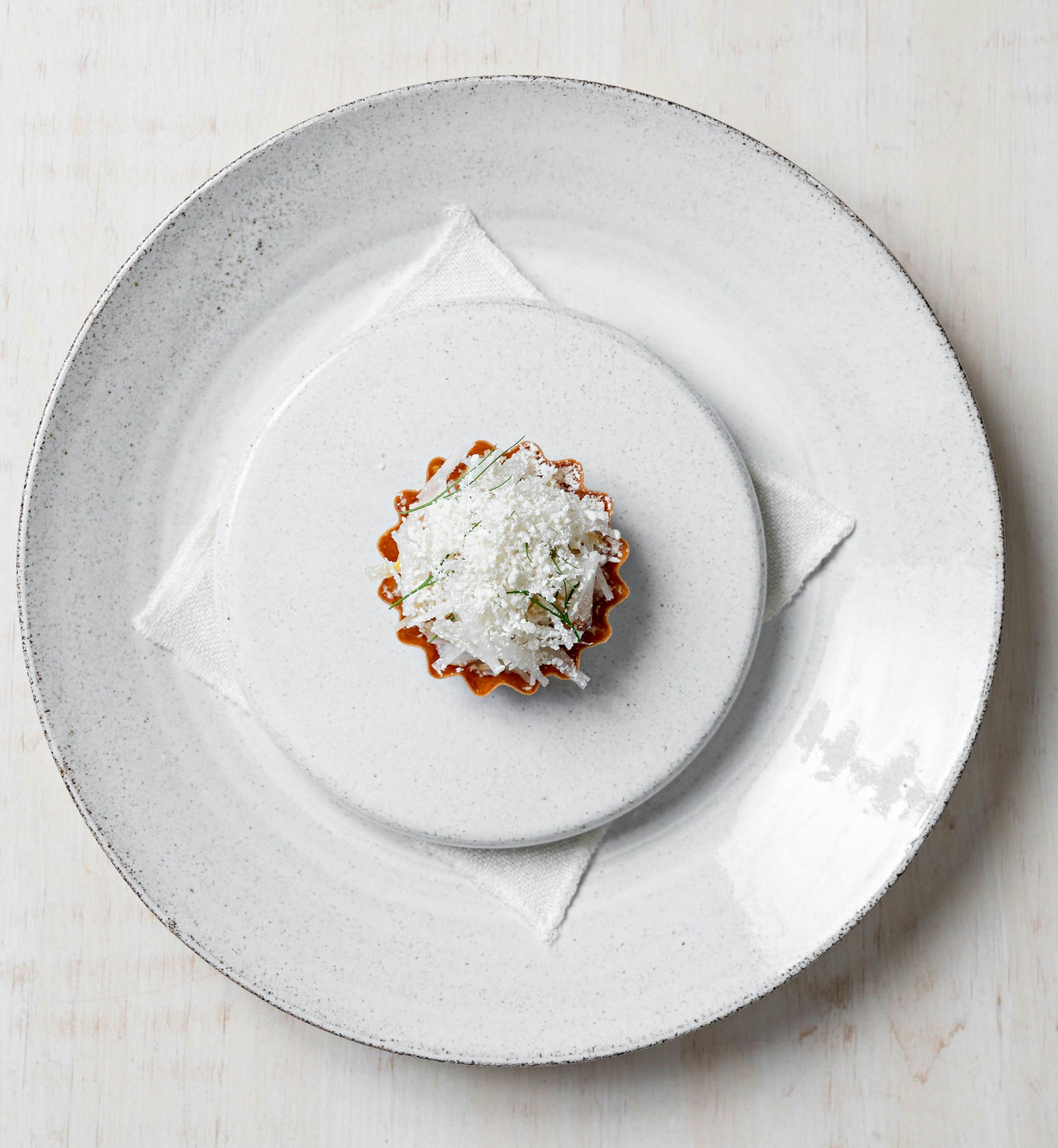A Taste Odyssey with Jacob Holmström
A little bite packing a big taste.
Words by Sophie Miskiw. Photography by Johan Ståhlberg.
When a bite-sized dish is set down in front of you, it’s instinctive to polish it off without considering what goes into creating it. There’s nothing wrong with that - the idea, after all, is to enjoy your food without overthinking it. But to truly appreciate what you’re eating is to understand its intricacies and technicalities.
Take Jacob Holmström’s crispy pancake filled with crab. It sounds simple yet in reality, this small dish packs in an odyssey of taste, temperature and texture.
This particular odyssey began five years ago when Jacob and his Gastrologik co-founder Anton Bjuhr discovered a technique for creating a thin, elegant pancake from egg whites, flour, stock and seasoning. What began as an attempt to make a crispy chip from reindeer blood influenced by the French crepe dentelle, culminated in the delicate but surprisingly sturdy pancake often served in Gastrologik today.
“It keeps the shape, it’s crispy, and it’s thinner than any pie shell,” says Jacob. “We have probably made about 30 to 40 shapes and seasonings over the years.”
With the crispy pancake perfected, Jacob and Anton turned their attention to the seemingly endless combinations of possible fillings. Since the pair rely solely on local produce, the fillings naturally reflect Sweden’s changing seasons. This past autumn, the crispy shell has been filled, at various points, with mushrooms, lobster, and langoustines.
The version we are presented with is filled with crab prepared in two ways. The bottom-most layer is a smooth cream made from blitzed roe mixed with steamed Jerusalem artichokes. The result is a slightly firmed cream with an enhanced crab flavour. Resting on the crab butter is claw and leg meat cooked in brine, sugar, seeds, and salt - a typically Swedish way of preparing shellfish. Atop the two layers of crab is raw Jerusalem artichoke chopped chiffonade, finished off with grated horseradish mixed with hung sour cream and passed through the centrifuge.
“You end up with a very powerful juice which is more like pepper spray! It’s very potent,” says Jacob. “So you get something that is like grated horseradish but doesn’t have the texture and woodiness of horseradish.”
Jacob believes that some chefs can rely too much on the flavour of a dish, overlooking the importance of the mouthfeel, temperature, and aesthetic. When people say that something tastes really good, it’s just a small part of the story, he says. This little dish is a microcosmic paradigm of his belief, a compact bomb of contrasting tastes, textures, and temperatures - starting with the warm crab meat and culminating with the frozen horseradish.
“You end up with a very powerful juice which is more like pepper spray! It’s very potent,” says Jacob. “So you get something that is like grated horseradish but doesn’t have the texture and woodiness of horseradish.”
“Contrast in textures is a way of enhancing the contrast in flavours as well. If you have something sweet, you want to contrast it with something acidic and you should always have a contrast in textures too. It also changes in temperature from the bottom up. Altogether this really enhances the experience.”
For the creatively-inclined, one of the biggest challenges is knowing when to say 'that’s a wrap' on a project. If it sounds like this flavourful creation has reached the zenith of its evolution, it may well have, says Jacob. For the next five minutes, at least.
“It feels like when you finally reach the goal line, five minutes later you move the posts again. That feeling of satisfaction is very short. But I think that’s a good thing because if you were too satisfied with everything, you’d never strive to be more creative.”
Words by Sophie Miskiw. Photography by Johan Ståhlberg.
